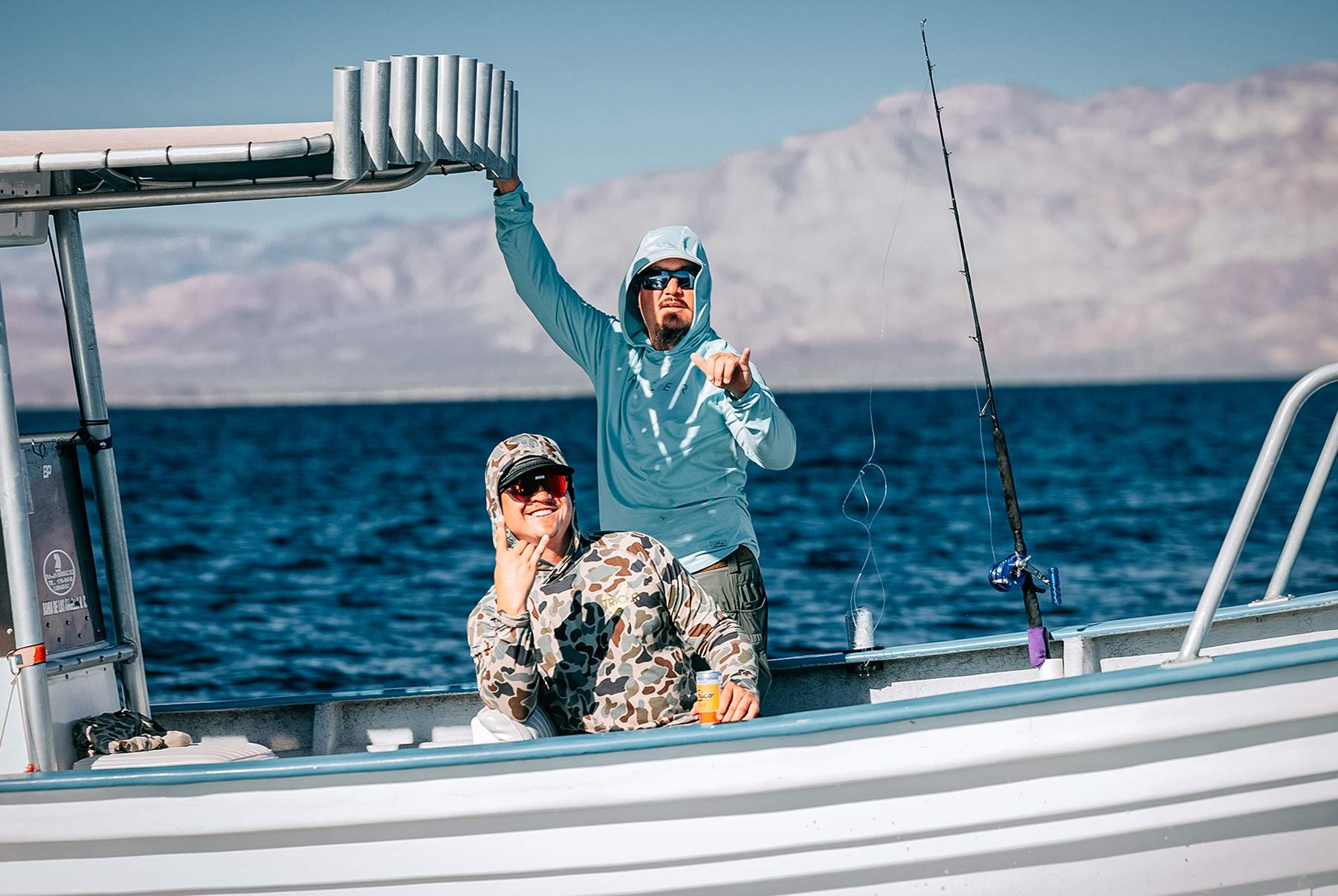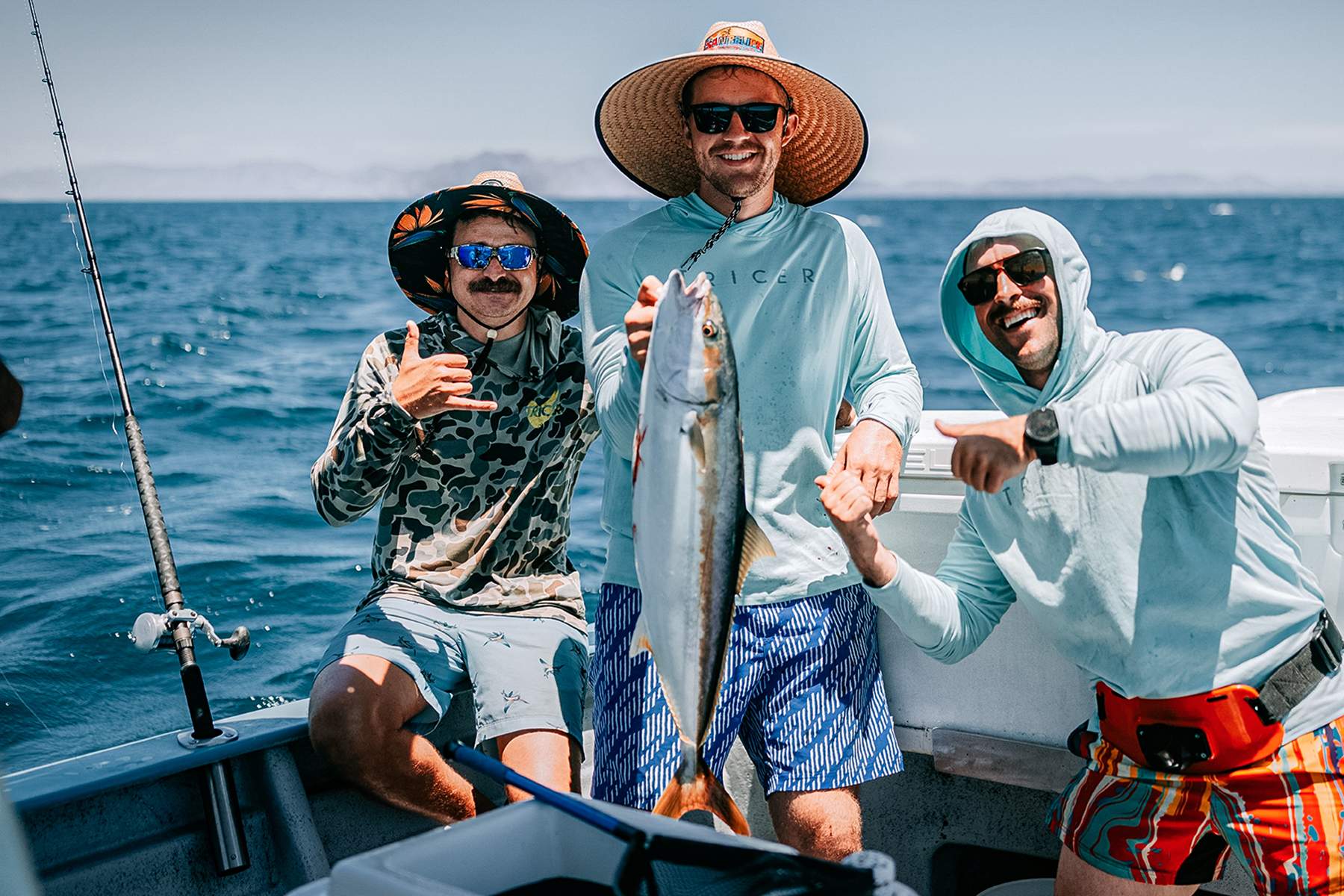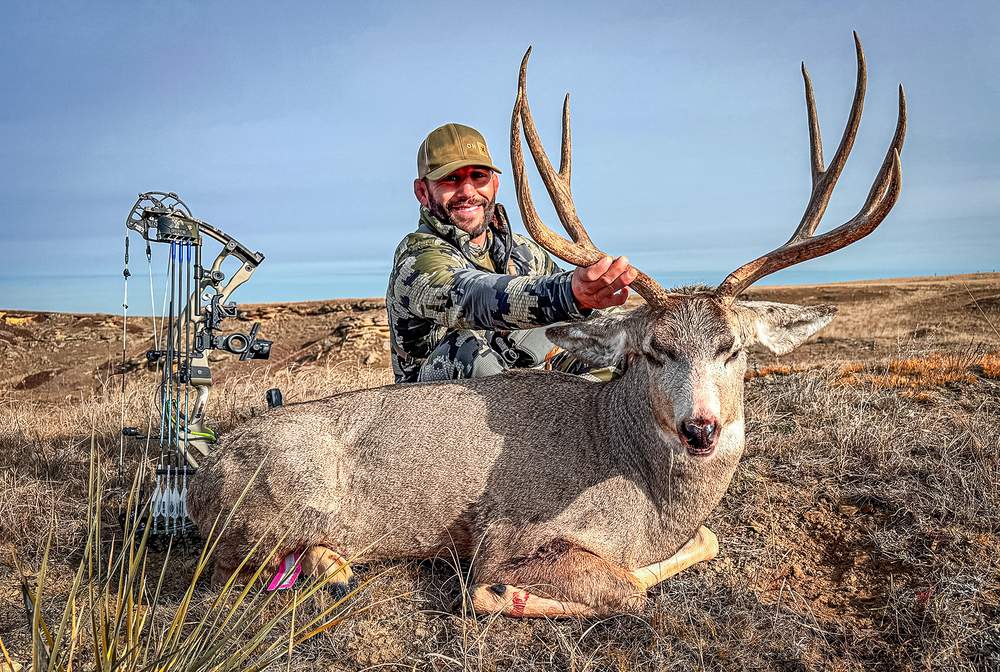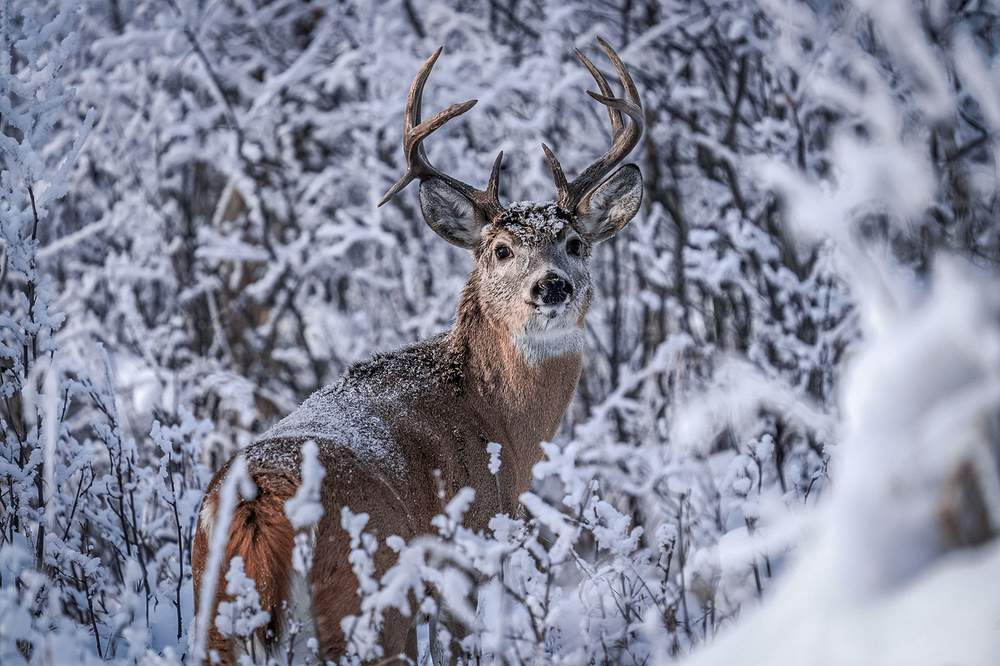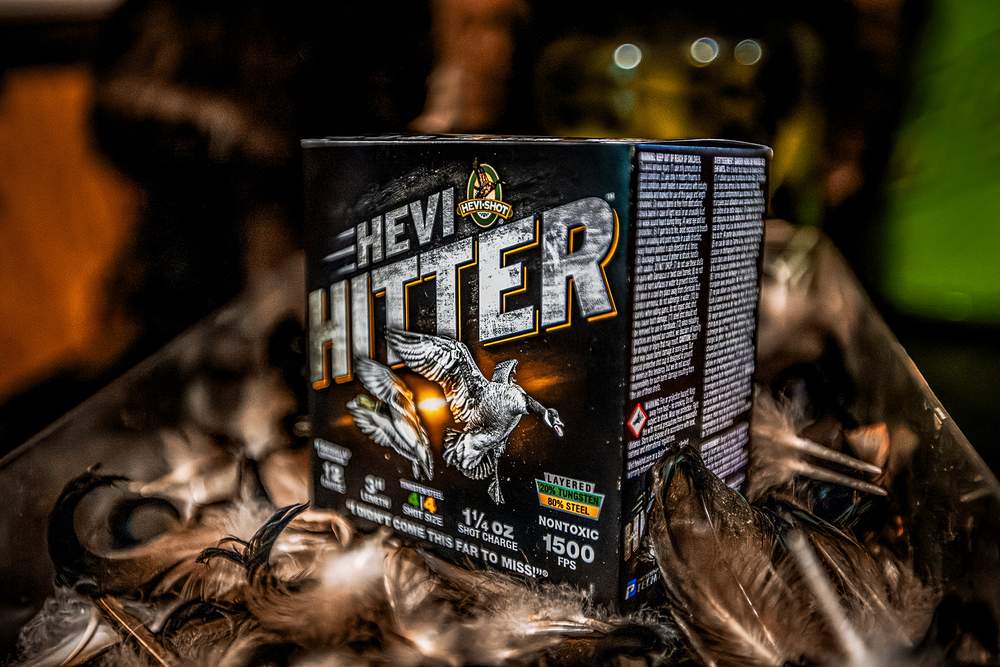Baja doesn’t roll out the red carpet. It hands you a warm beer, a flat tire, and some of the best fishing on the planet. You earn everything here, and that’s what makes it stick.
Drive far enough down the peninsula and the rest of the world falls away. Cell service disappears. Roads turn to dust. You start measuring time in sunrises, tide swings, and how many cervezas are left in the cooler.
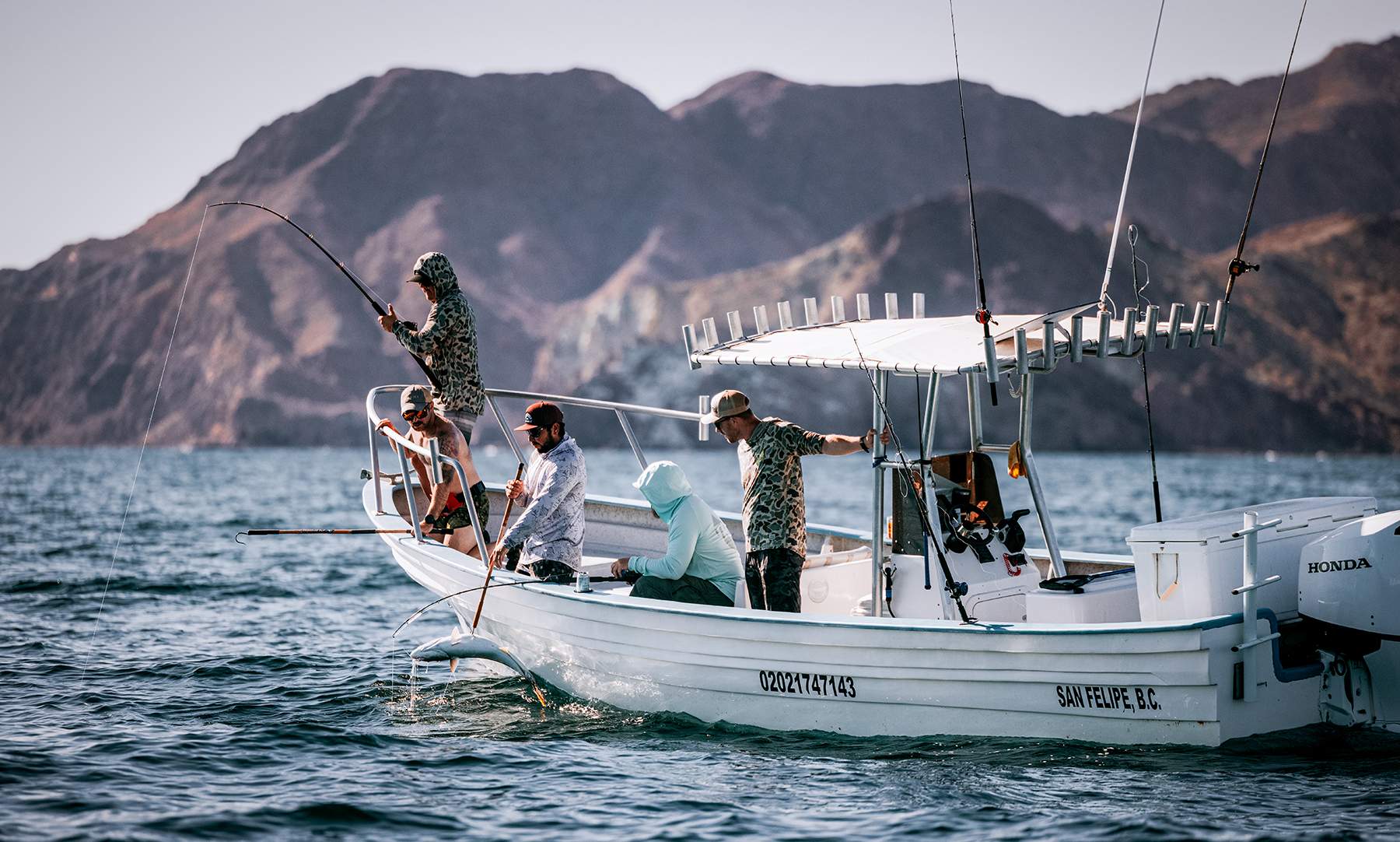
At Bahía de los Ángeles (BOLA), the desert collides with the sea in a way that doesn’t make sense until you see it. Cactus and ocotillo line the shore like picket fences, guarding a coastline so beautiful it feels fake. The water is impossibly clear, teal and turquoise, like something you'd expect in the Caribbean, not backed up to jagged red rock and sunburnt mountains.
The humidity hits like a body shot when you step out of the truck. It clings to your skin, mixes with salt, sunscreen, and diesel exhaust from the old panga warming up on the beach. By the time the sun breaks over the horizon, the world is orange and gold and already alive — pelicans bombing bait balls, gulls wheeling overhead, and the occasional rooster tail of a speeding skiff chasing the yellowtail bite.
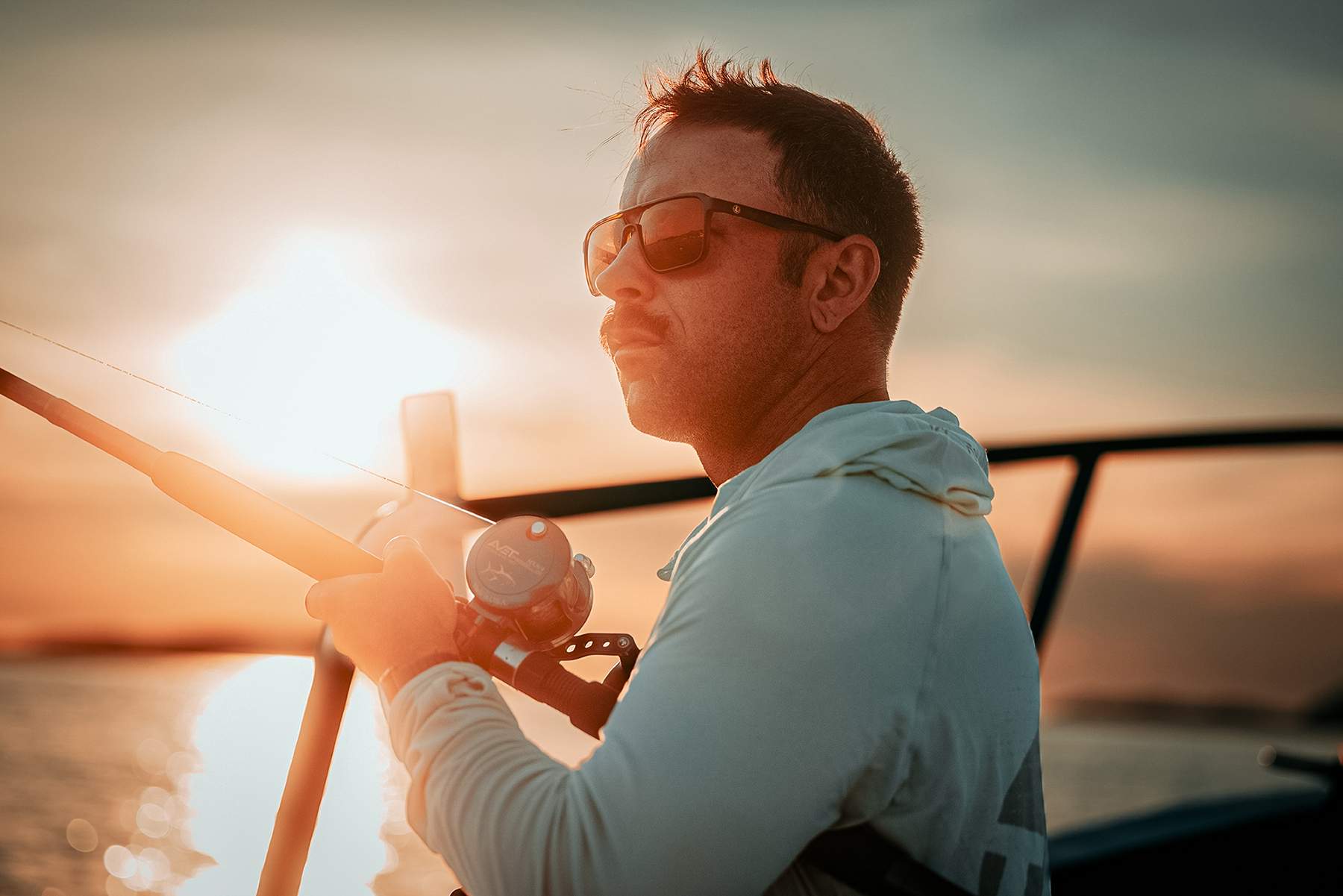
This place isn’t for tourists. It’s for fishermen. The kind who’ll crash in a no-frills shack on the beach or roll out a pad under the stars, whatever it takes to be close to the water when the bite turns on. You skip showers, swat mosquitos, and fall asleep with the sound of waves and spinning reels in your head. It’s rough, it’s raw, and it’s worth it when you’re standing barefoot on the deck, muscles spent, hauling a yellowtail over the rail and into the cooler.
Baja makes you work for it. And that’s why the ones who come here? They keep coming back.
Getting There: Crossing Over and Leaving Comfort Behind
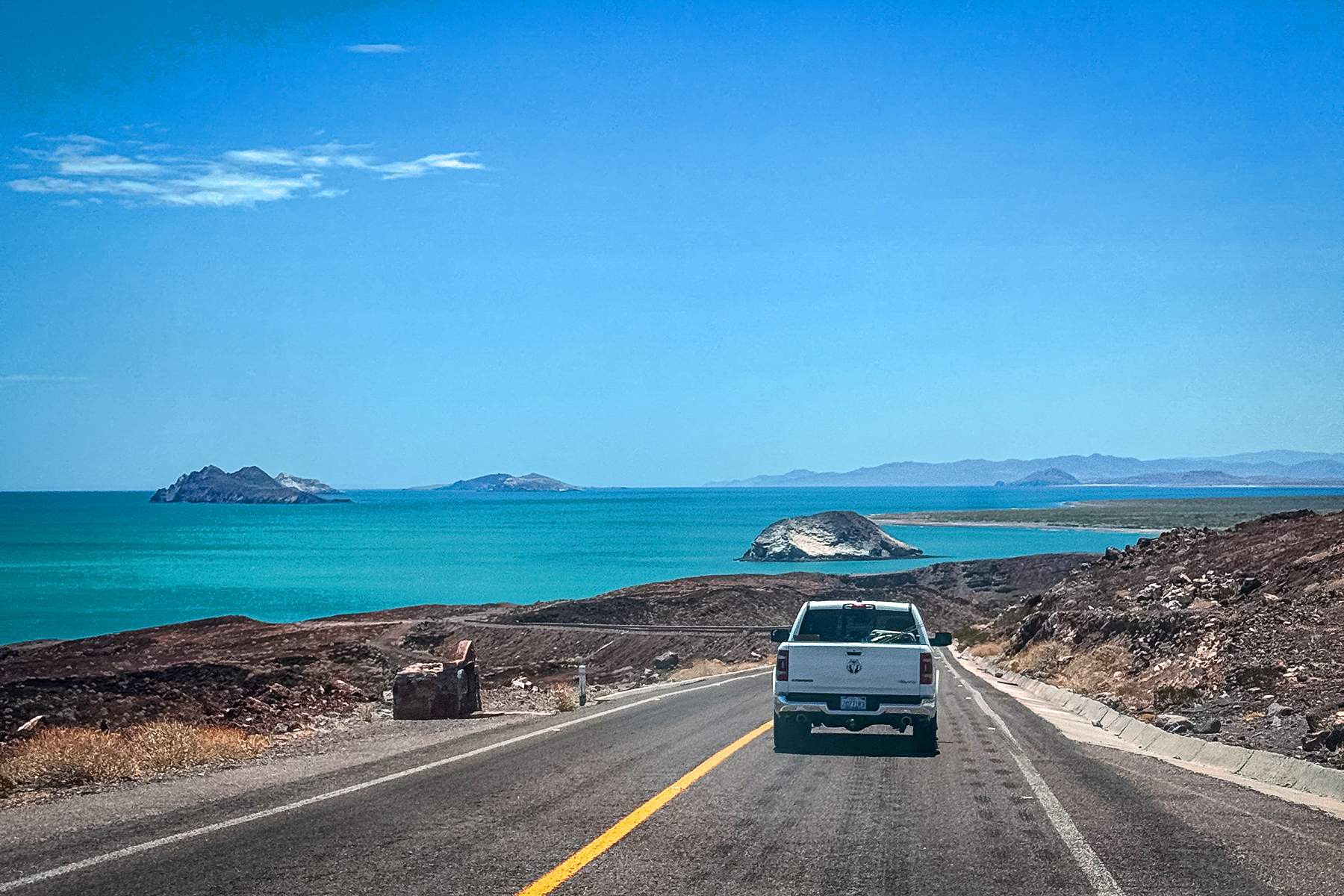
The trip started with a flight into San Diego, but the real adventure began when we loaded the trucks and pointed them south. The plan was simple: cross at Mexicali, then bomb down through San Felipe and into the remote backcountry that leads to Bahía de los Ángeles. What’s simple on a map feels a little more feral once you’re actually doing it.
There are multiple border entry points, but Mexicali East is the move if you're hauling gear. It’s typically faster, less chaotic, and easier to navigate than the downtown crossing. That said—don’t screw around in border towns. We fueled up in the States, hit the border early, and didn’t stop until we were well outside Mexicali. The same goes for food. There’s no shame in rolling past a dozen taco stands if your gut says keep moving.
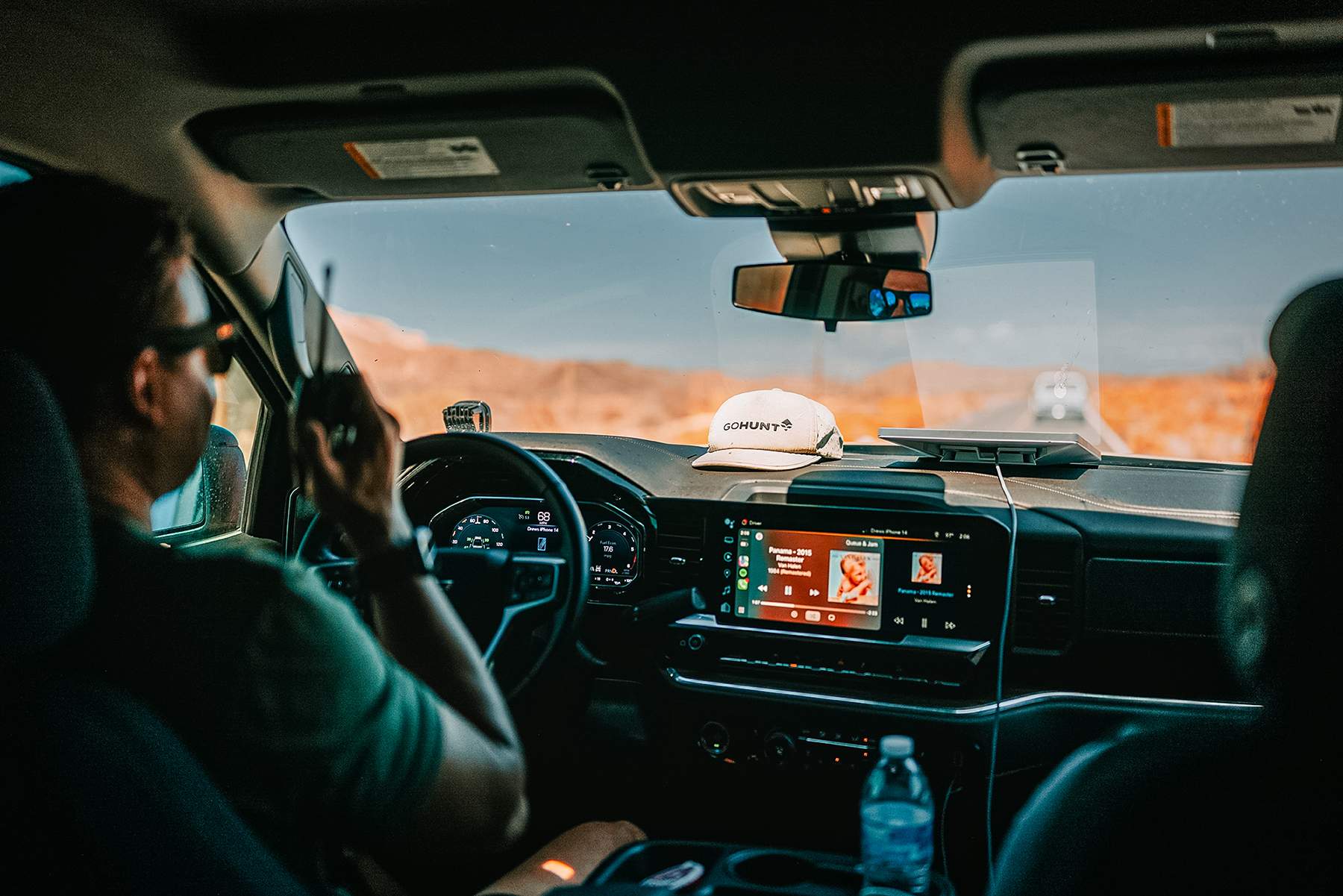
Once you're out of the sprawl, the real Baja kicks in. The road hugs the Sea of Cortez for stretches, then veers inland into pure desert. We stopped in San Felipe for fuel and lunch; it’s your last real shot at decent food, decent gas, and a flushing toilet for a while. From there, it's a long, desolate haul to BOLA.
If you’re traveling in multiple vehicles, bring radios. Cell service is spotty at best, and getting separated out there is no joke. Radios let you call out hazards, stop for photos, or just talk trash across the convoy. That stretch between San Felipe and BOLA has almost no services, no shade, and no cell towers. If something goes wrong, you’re solving it yourself.
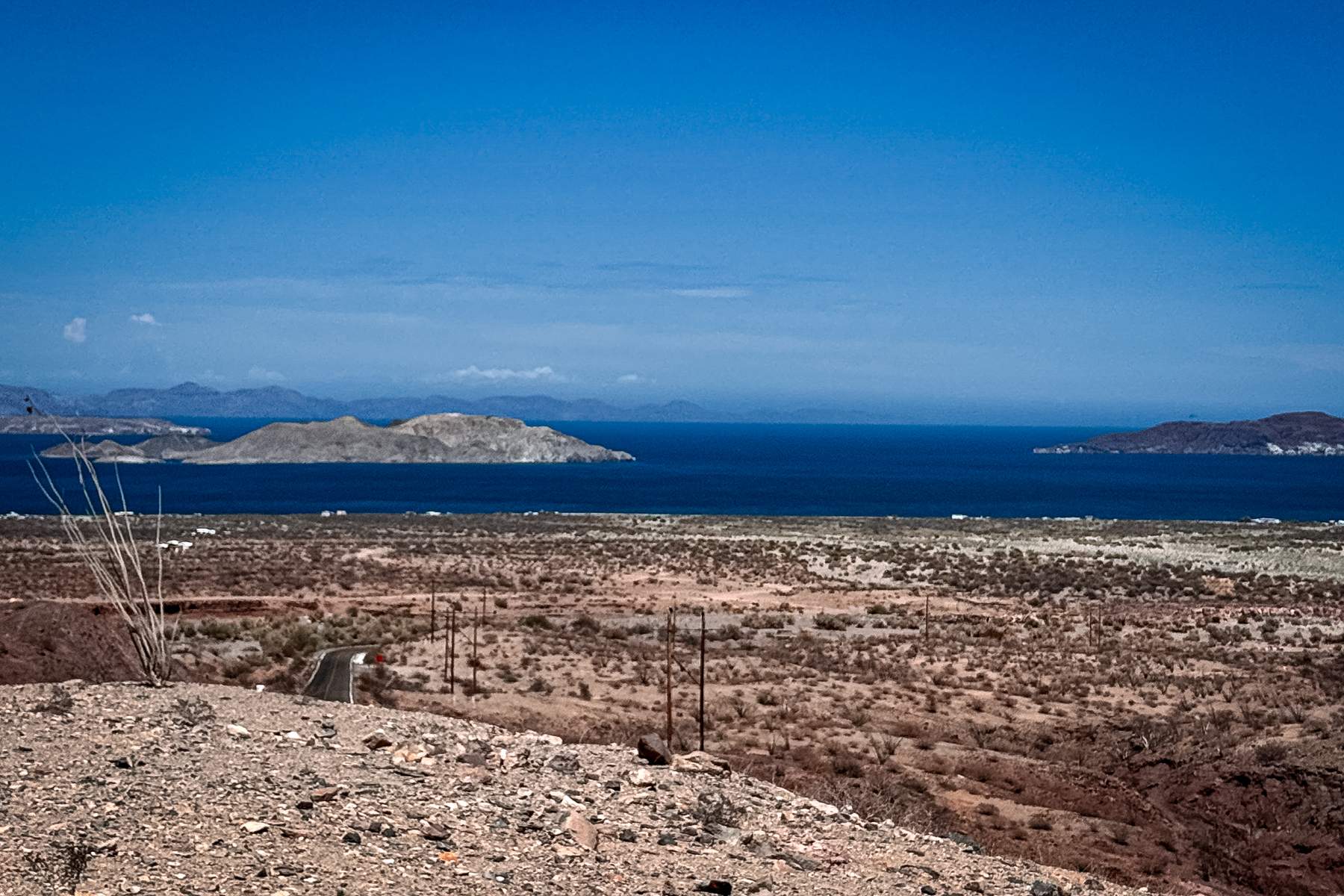
The further south you drive, the worse the roads get. What starts as decent pavement turns into a patchwork of asphalt and tire-shredding potholes. Some are axle-busters: deep enough to wreck a trip if you're not paying attention. If you’re towing or hauling weight, take your time. A spare tire isn’t a suggestion down here, it’s a requirement.
By the time you reach the turnoff to BOLA, the pavement narrows, the desert opens wide, and you start to realize: you’re a long damn way from anywhere and exactly where you need to be.

The Town: Redneck Paradise at the End of the Road
Bahía de los Ángeles isn’t polished. It’s not marketed. It doesn’t have a TripAdvisor top 10 or curated influencer reels. What it does have is good people, sand, and a stretch of coastline that feels like it was forgotten on purpose.
We stayed in a weathered shack right on the beach. Nothing fancy, bare-bones beds, a propane stove, and cold showers if you’re lucky. But it was clean, close to the launch, and had that salty, sun-baked charm that tells you you're in the right place. And the company? All die-hards. Guys living full-time on sailboats, chasing wind and fish up and down the peninsula. Grizzled fishermen with hands like rawhide and a deep love for places like this.
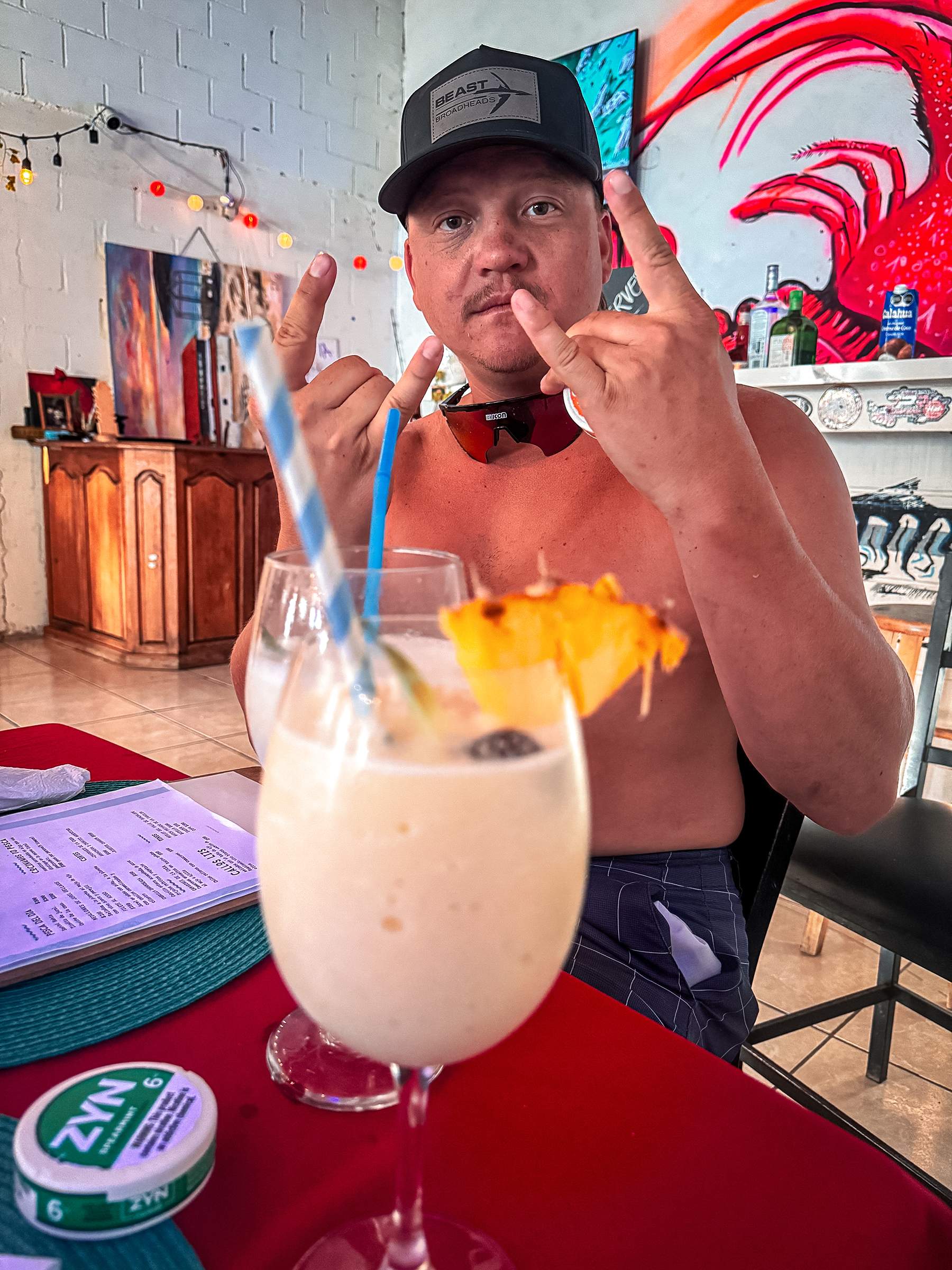
You won’t find the best of BOLA online. The real stuff, where to stay, who to fish with, what’s biting and when: it can’t be found on websites or booking platforms; it lives in WhatsApp messages, social media DMs, and secondhand referrals. You DM a local hotel manager. You message someone’s cousin who runs a panga. You ask around and someone points you in the right direction, if they trust you.
People guard their sources down here, and with good reason. But I’ll give you one breadcrumb: Google Liz’s Restaurant. From there, start connecting the dots. Talk to the restaurant owners. Ask about who’s running pangas. Be respectful, don’t act entitled, and you’ll be surprised how many doors open.
Fishing Baja: Yellowtail, Grouper, and the Grind
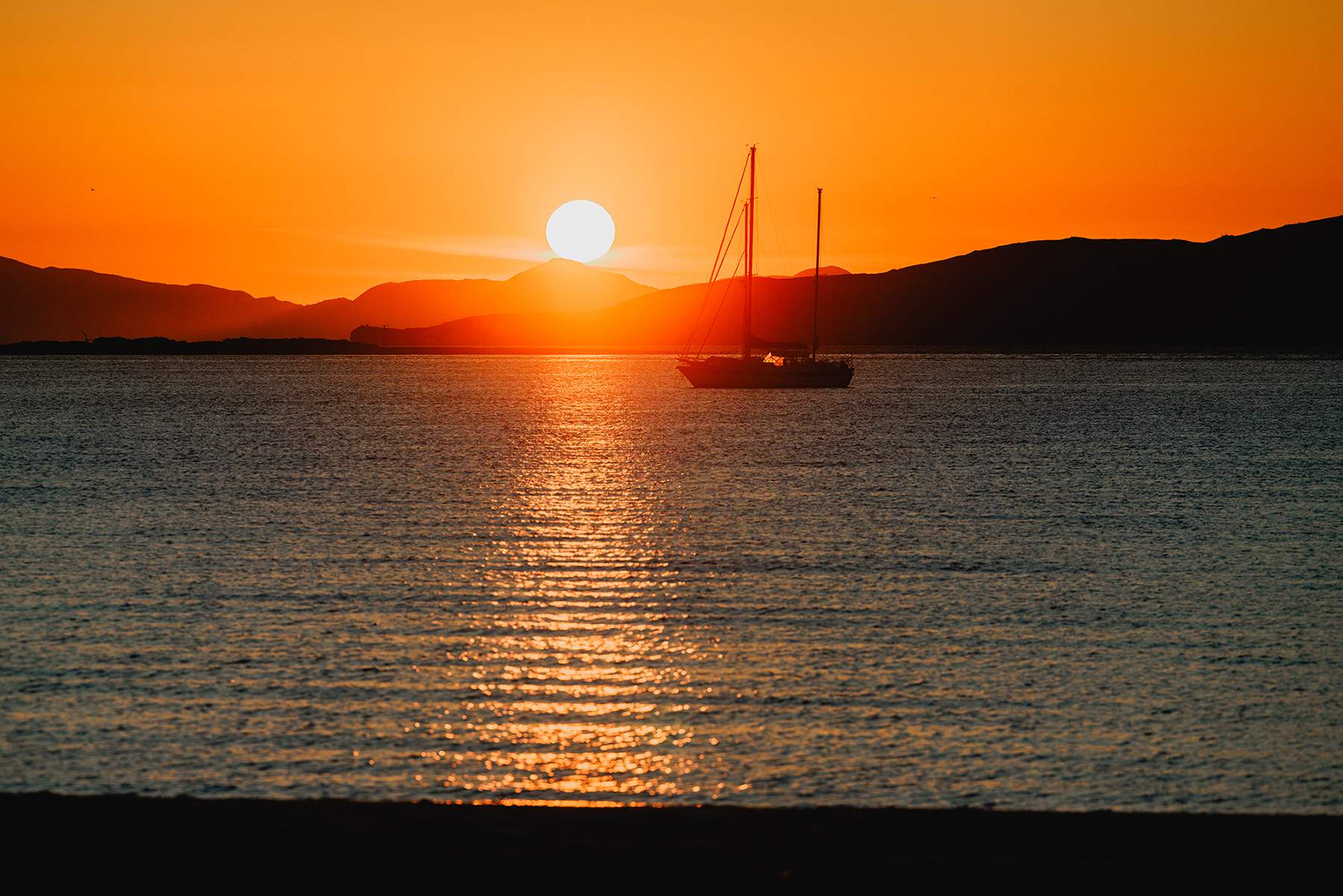
Yellowtail were the main event.
Summer in BOLA means warm water, bait stacked deep, and yellowtail holding tight to rock piles offshore. We were hoping dorado would be in the mix — those blue-green missiles that light up the water and test your gear in all directions — but they hadn’t moved into the bay in force. Locals said, “Any day now,” but that day wasn’t ours.
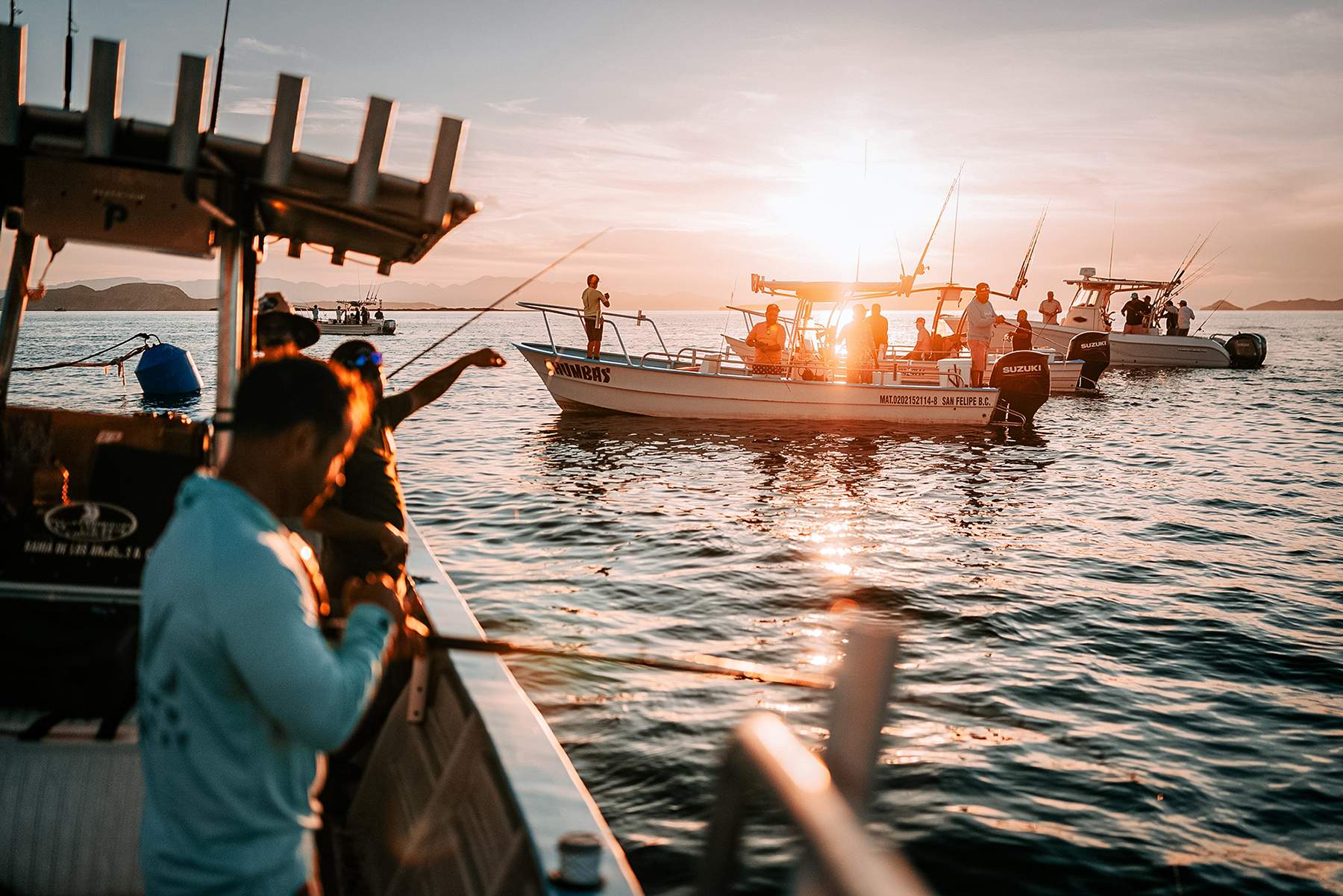
Most mornings started with sabiki rigs. We’d drop small rigs over the side to jig up fresh baitfish, one after another, until the tank was full. From there, we ran out to the high spots, dropped bait straight to the bottom, and slow-cranked it back through the strike zone. Most of our fish came out of 300 feet of water, right where the bottom meets the edge of structure.
When yellowtail hit, they didn’t play. There’s no warmup, no soft pull. They crush the bait and head straight for the rocks.
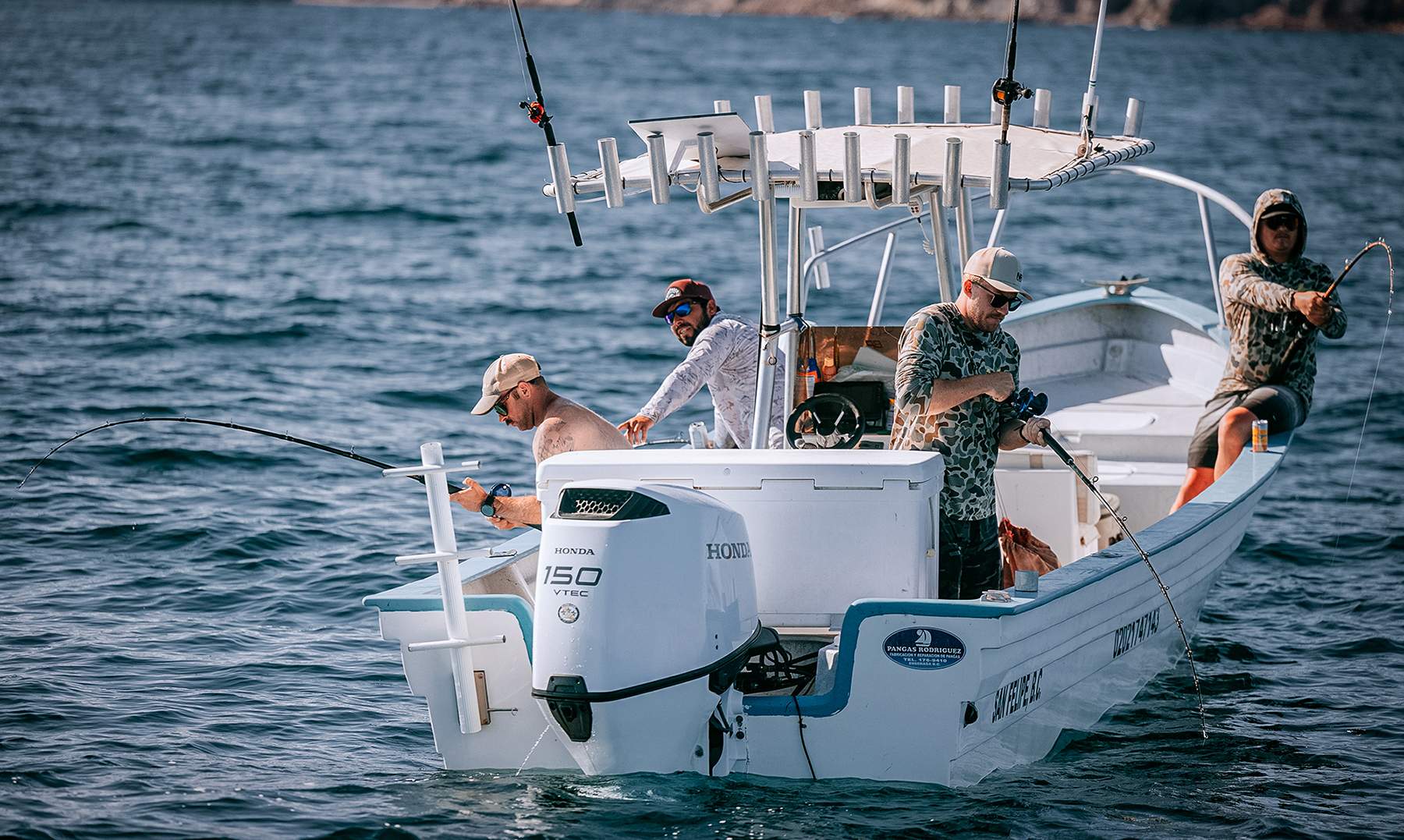
The first five seconds decide the whole fight. Lock the drag, lean in, and keep their head turned, or you're donating tackle to the reef. No in-between.
Bringing your own gear isn’t optional, it’s smart. Most captains expect it, and while some offer loaners, what you get might be duct-taped and tired. We fished heavy setups: 60- to 80-pound-test line, fluorocarbon leaders, and terminal gear that could take a hit. If you show up light, expect to lose fish, and maybe some pride.
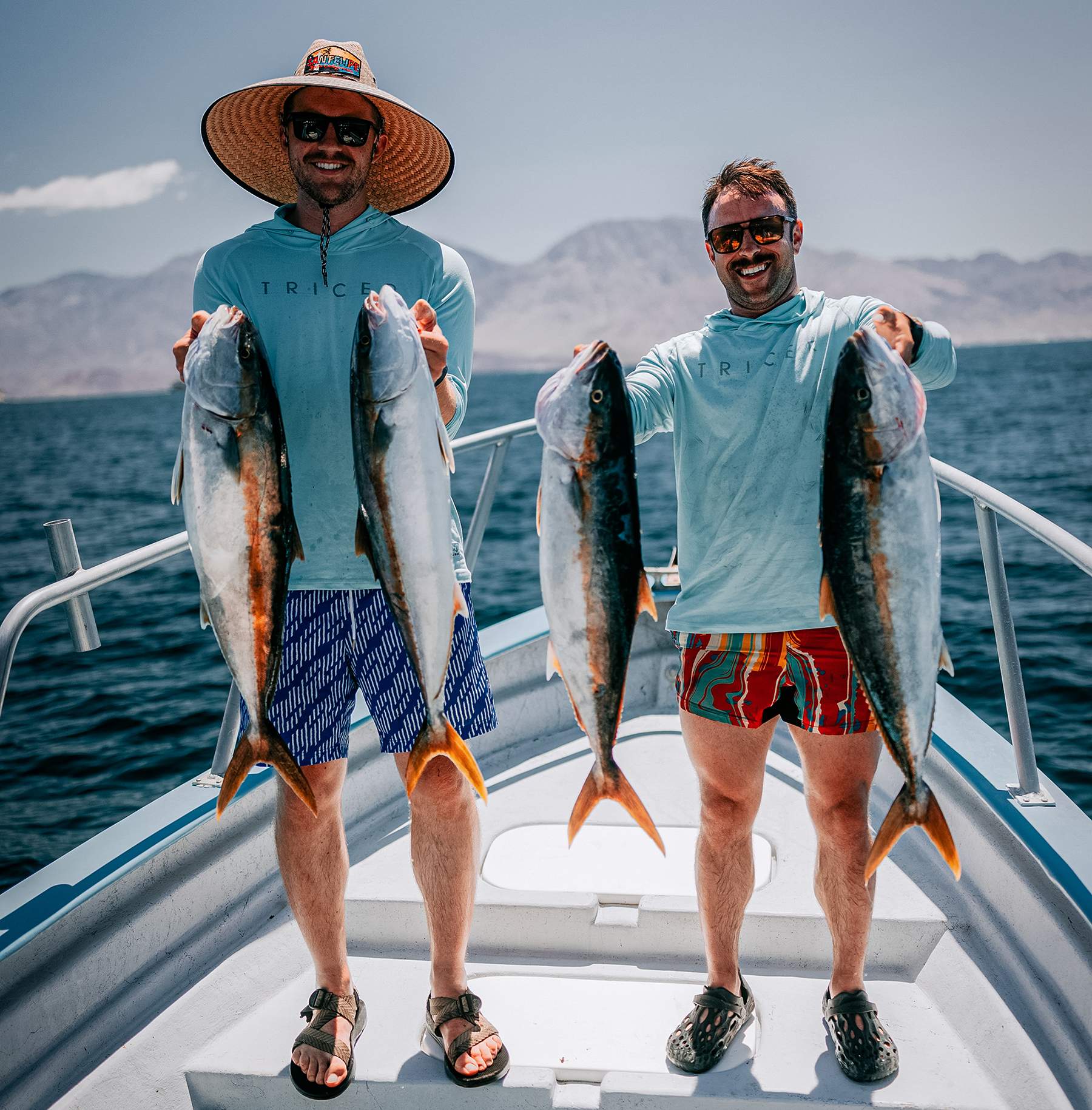
The best fish of the trip came late morning on our second day. We dropped fresh bait on a rocky point, and within seconds, the rod doubled over and the reel started to thump. It wasn’t a long fight, but it was hard. Deep, heavy pulls. No drama. Just torque. When we pulled it over the rail, it was a yellowtail pushing 40 pounds — shoulders like a linebacker, color lit up in the sun.
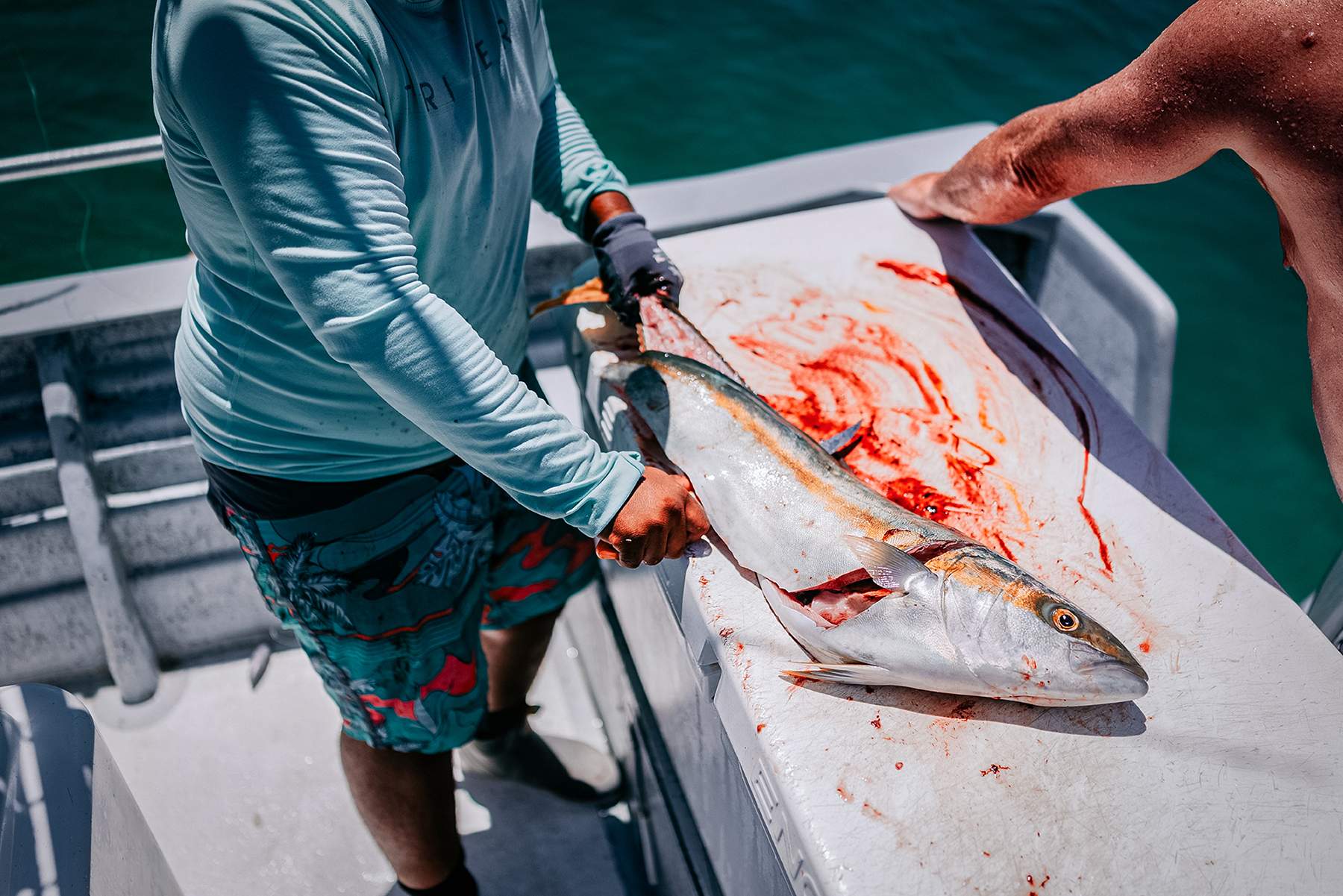
That fish fed the whole crew later that afternoon when we pulled into one of the most picturesque bays I’ve ever seen. Calm water, white sand, and not another soul in sight. We swam, spearfished, and explored the coast barefoot and half-buzzed on salt and sun. Our two boat captains pulled out the knives and went to work, slicing fresh yellowtail sashimi right on top of the cooler lid. They drizzled it with soy sauce, fresh lime juice, and a streak of Sriracha.
It was a meal fit for kings: raw fish, bare feet, and nothing but water and desert in every direction.
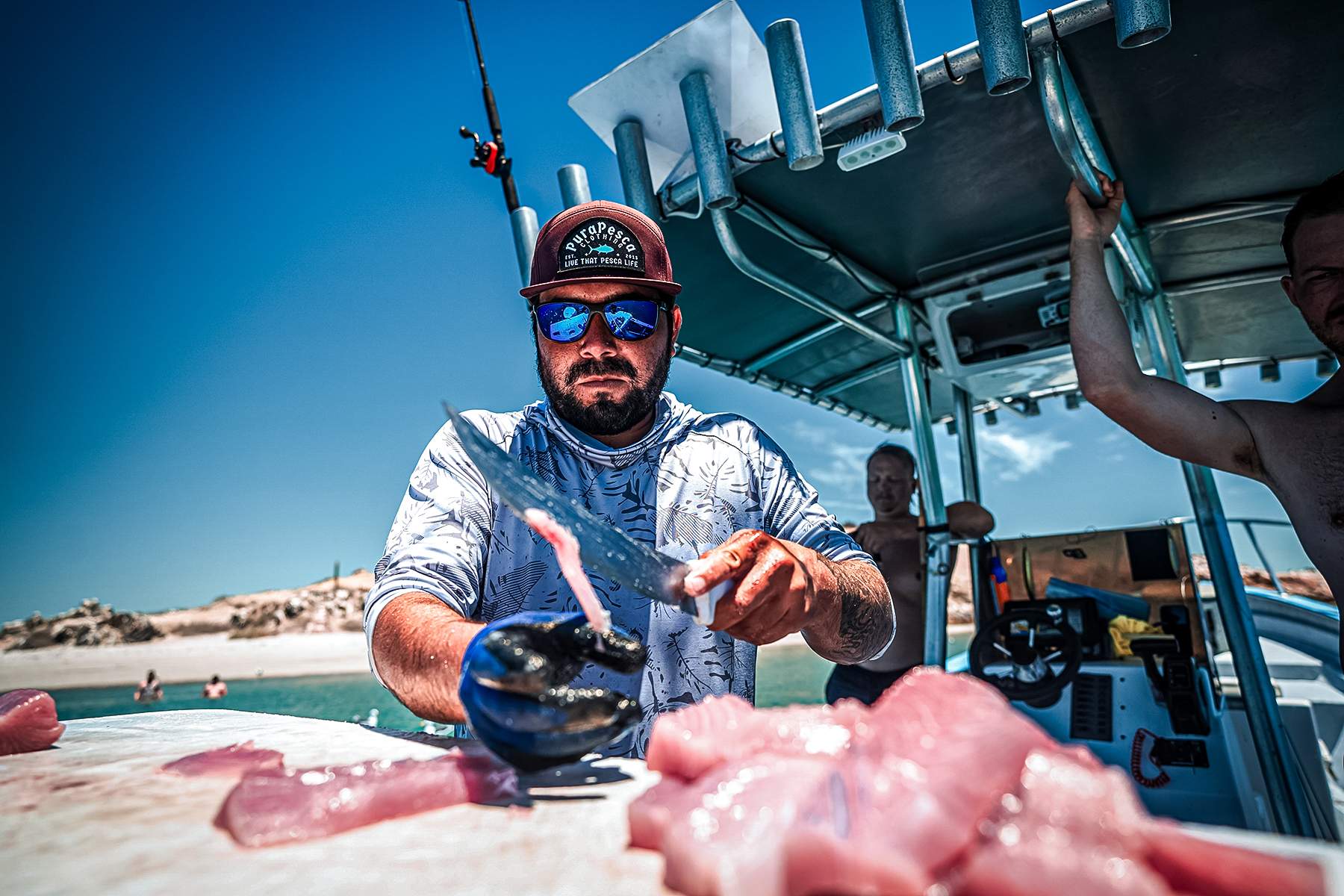
Yellowtail were the focus, but they weren’t the only ones willing to eat. We picked off a few leopard grouper, painted-up brutes that hit hard and fought dirty, and caught spotted bay bass in the shallower cuts closer to shore. Not the biggest fish, but scrappy and fun on light tackle.
Fishing in BOLA isn’t leisurely. You’ll finish the day sunburned, salty, sore, and grinning. It’s not about numbers or perfect conditions.
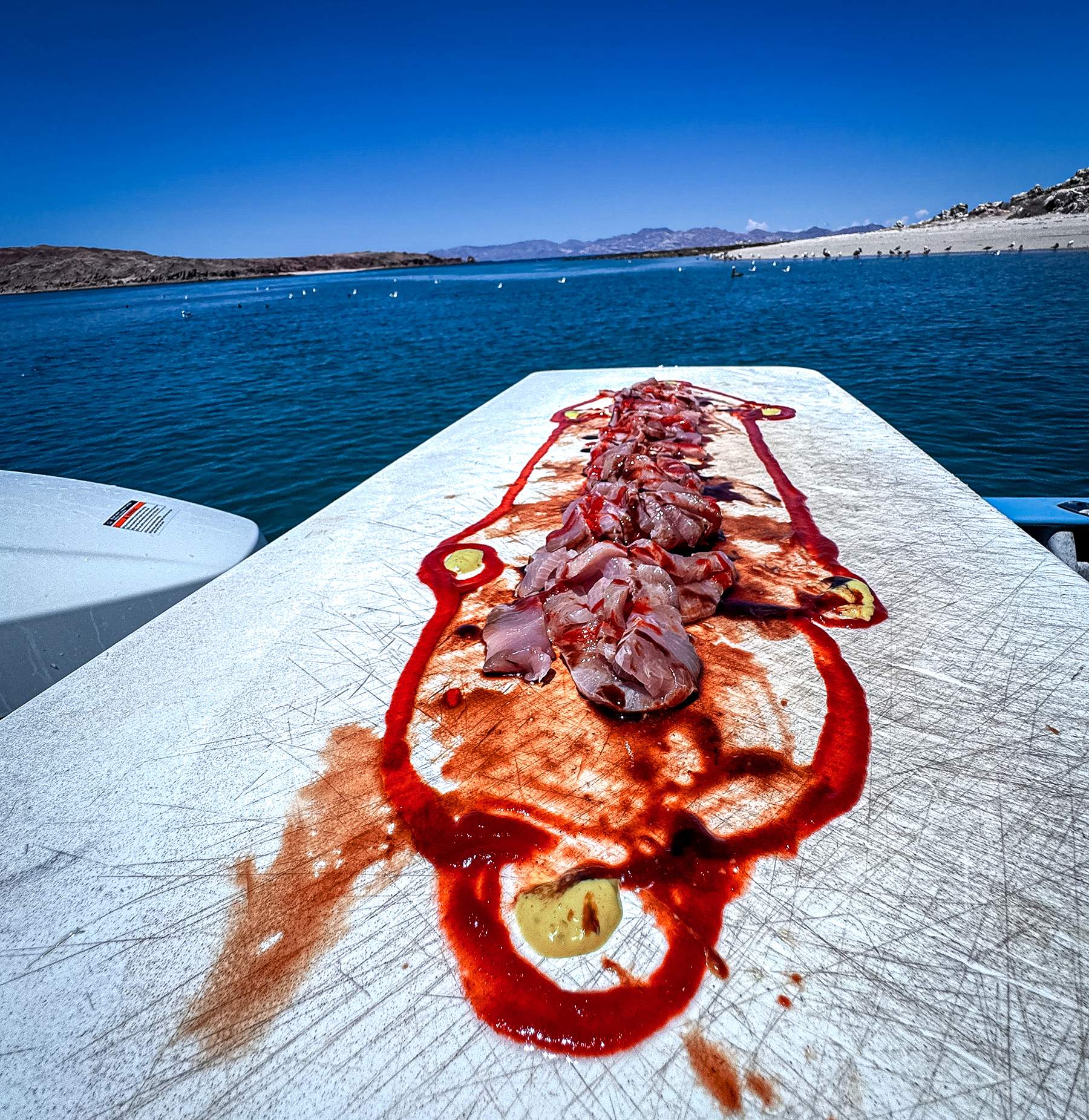
BOLA Fishing Kit: What Worked, What Didn’t
If you're heading to BOLA, bring gear you trust. This isn’t the place to test your bargain-bin reel or show up with a half-assed setup. Here’s what held up:
Rods:
Heavy-duty saltwater rods in the 6'6" to 7' range, rated for 60–100 lb. Line. Fast action with serious backbone like the St. Croix Mojo Salt-Series Conventional Rod.
Reels:
High-capacity conventional reels with smooth drag and strong cranking power like the Penn Fathom II Lever-Drag 2-Speed Conventional Reel
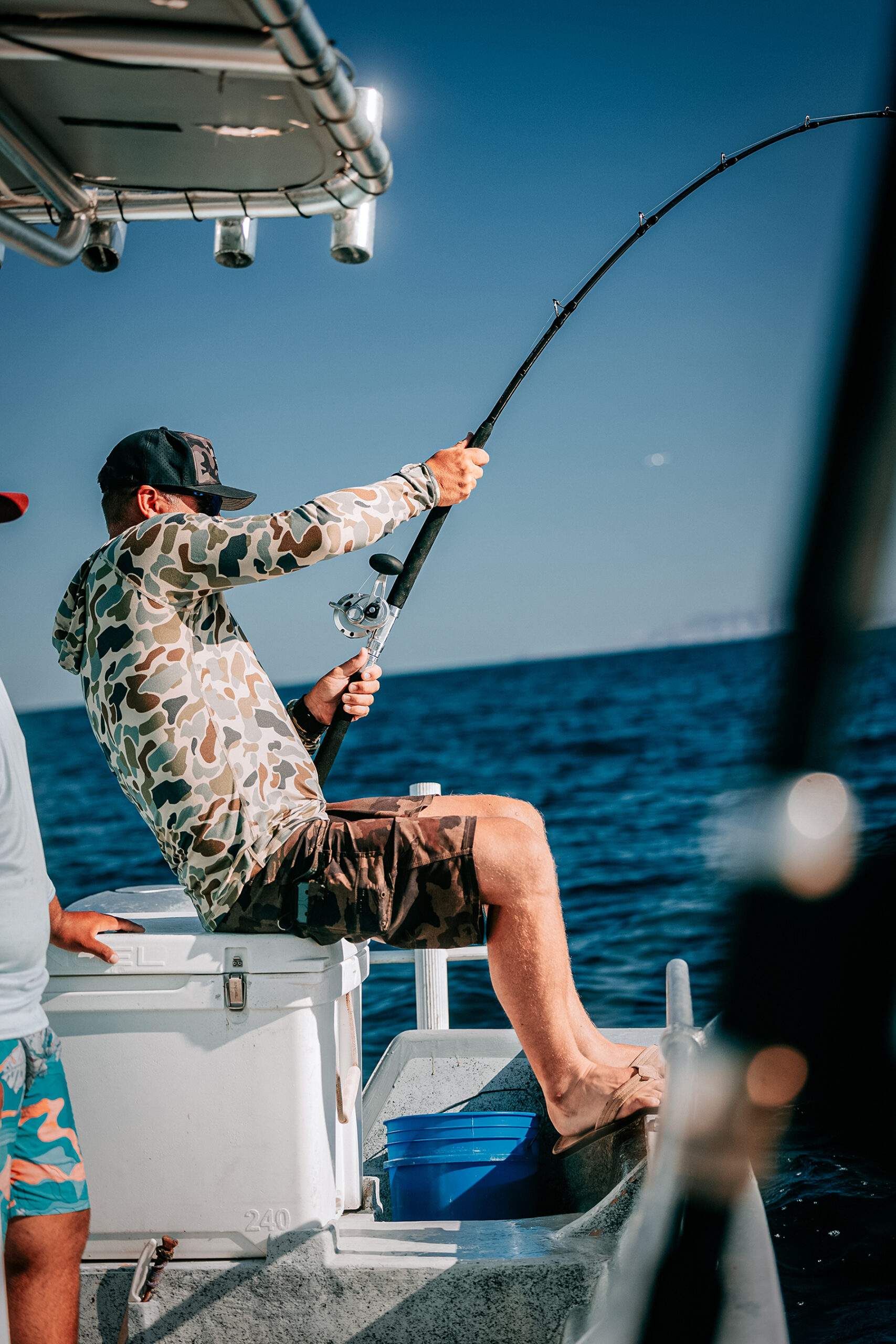
Line and Terminal Tackle:
- Offshore Angler Tight Line Premium Monofilament 1/2-lb. Spool (80-100lb)
- Sufix 832 Advanced Superline Braid Fishing Line 300-Yard Spool - Low-Vis Green - 80 lb.
- Offshore Angler Extreme Fluorocarbon Saltwater Leader (80lb)
- Offshore Angler In-Line 3X Circle Hook - 5/0 - Black Nickel
- Bass Pro Shops Stick Lead - Natural - 16 oz.
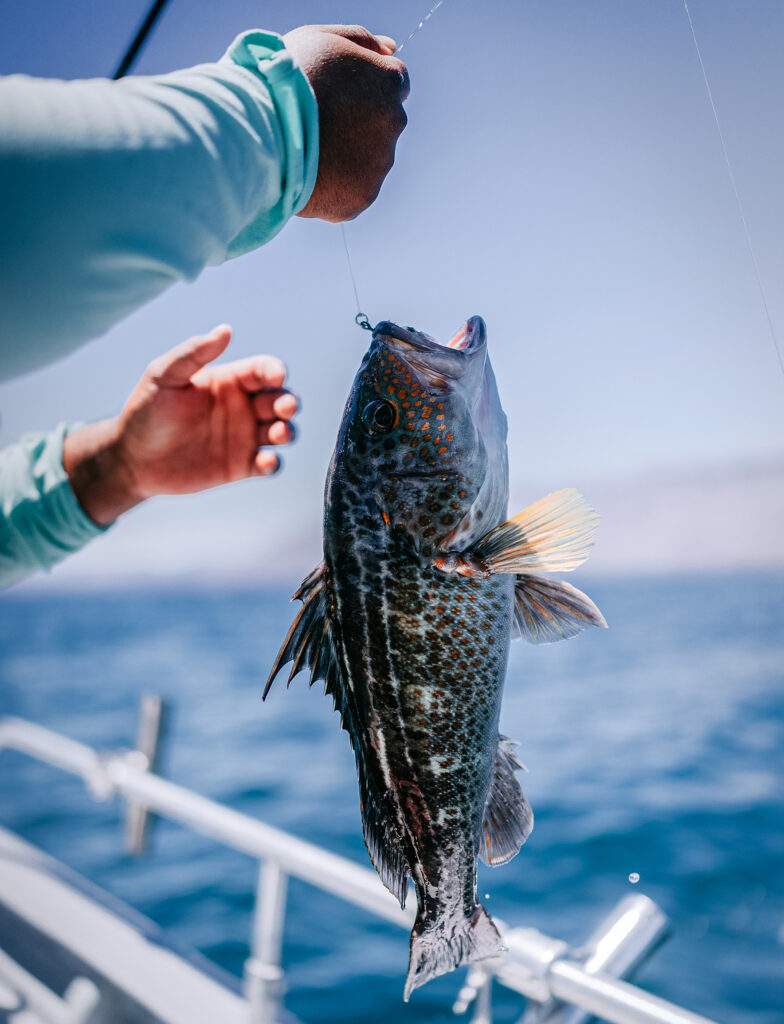
Sabikis:
Bring more than you think you need. You’ll lose rigs to tangles, toothy bait, and the occasional pissed-off pelican. Small hooks, strong braid, and a few different sizes will keep you in business.
Other Essentials:
- Sunscreen
- Hooded Sunshirts
- Dry bag for small gear, such as a phone, camera, and the like YETI Panga 28L Waterproof Backpack
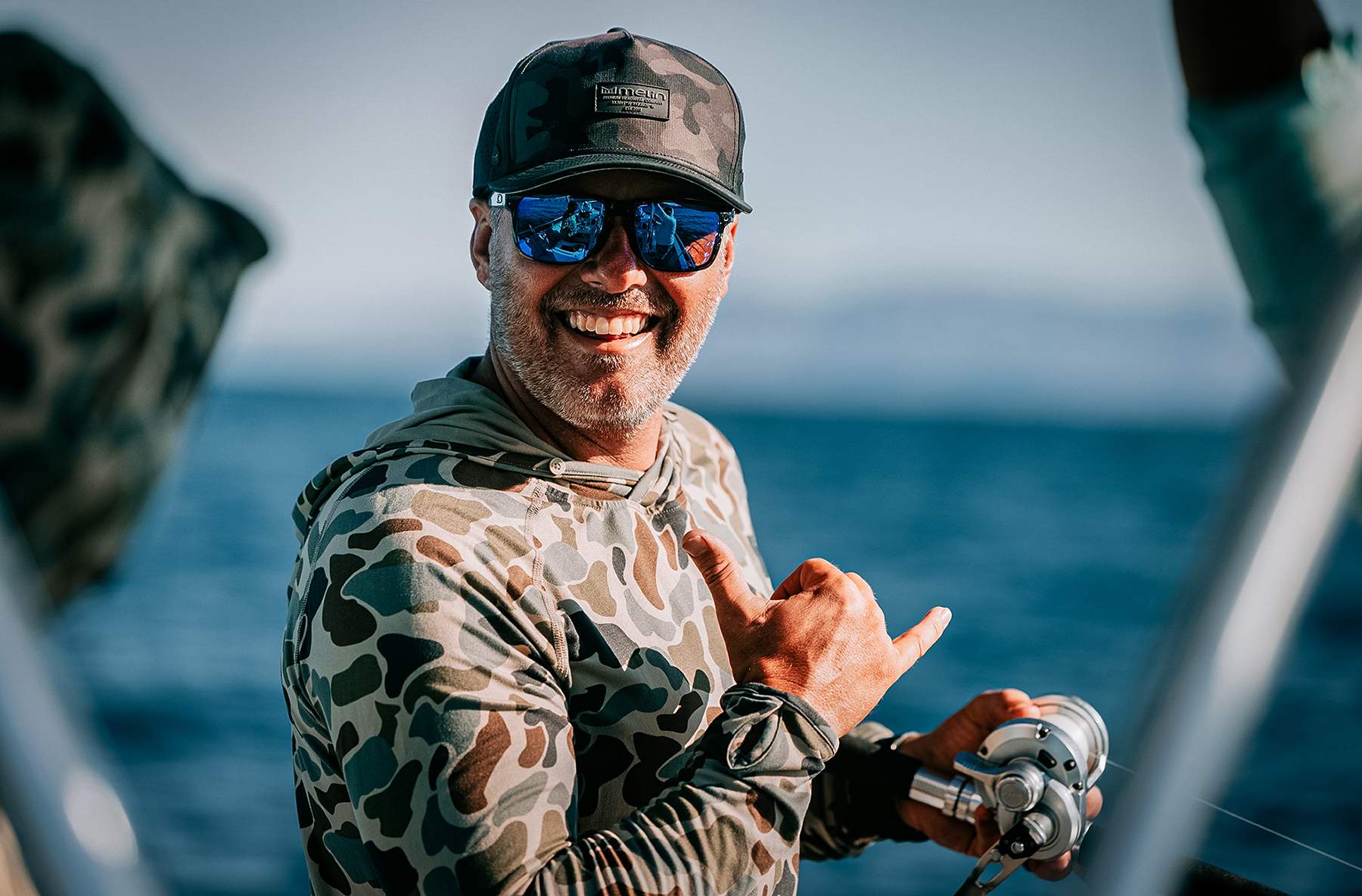
Affordability and the Baja Way
For a trip that felt like an expedition, the price tag was surprisingly light. Our beachfront shack cost $300 total for three nights and comfortably slept four grown men, each with their own queen bed and a functioning A/C unit. That’s $25 a night, per guy, to sleep cool and wake up steps from the Sea of Cortez. You can go even cheaper by camping right on the beach, but after a long day on the water, a real mattress and cool air made it easy to justify the extra bucks.
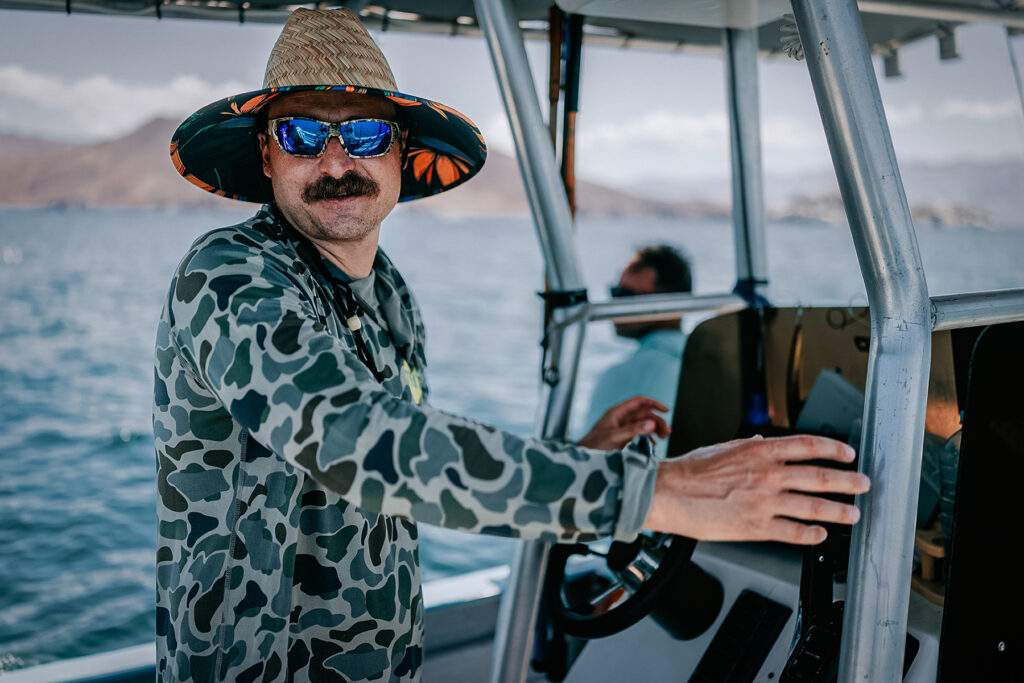
The boats ran us $550 a day, and each panga comfortably fished four men. Realistically, you could squeeze in five or six, depending on your setup and tolerance for elbows, but that’s a conversation to have with your captain. Split four ways, though, it’s hard to beat that price for a full day on the water with local knowledge, fuel, and bait handling included.
We brought a cooler full of food from the States, enough for breakfast and lunch on the boat: protein bars, jerky, sandwiches, and snack food that wouldn’t melt in the heat. Between that and the day’s catch, we ate light during the grind and saved our appetites for one proper meal each night at Liz’s Restaurant. Fresh surf and turf, hot tortillas, and ice-cold drinks served with a smile and zero pretense. By the second night, the staff knew us by name.
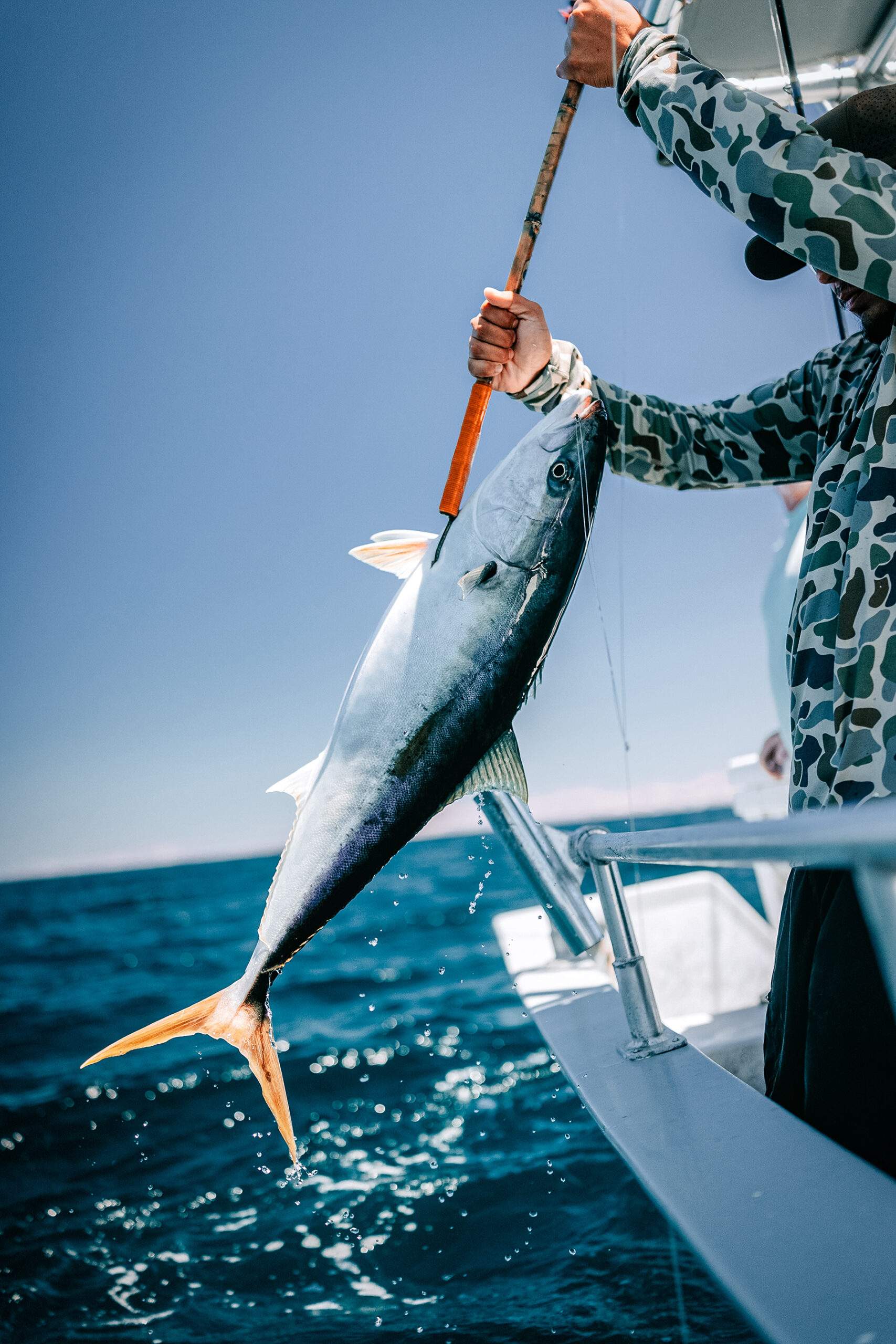
Water was non-negotiable. Bring more than you think you’ll need. Same goes for caffeine, if that’s your vice. We showed up stocked with adult beverages, but the drinkers among us quickly embraced the local culture, stopping at the market for Tecate Light pounders and the occasional 40-ounce curveball. They’re cold, cheap, and perfect after a long day baking in the Baja sun.
In the end, this was a trip built on priorities. Spend where it counts: boats, fuel, gear, cold beds, and keep the rest simple. You don’t need room service or resort menus to feel rich down here. A solid crew, a strong bite, and a good meal at the end of the day is all it takes.
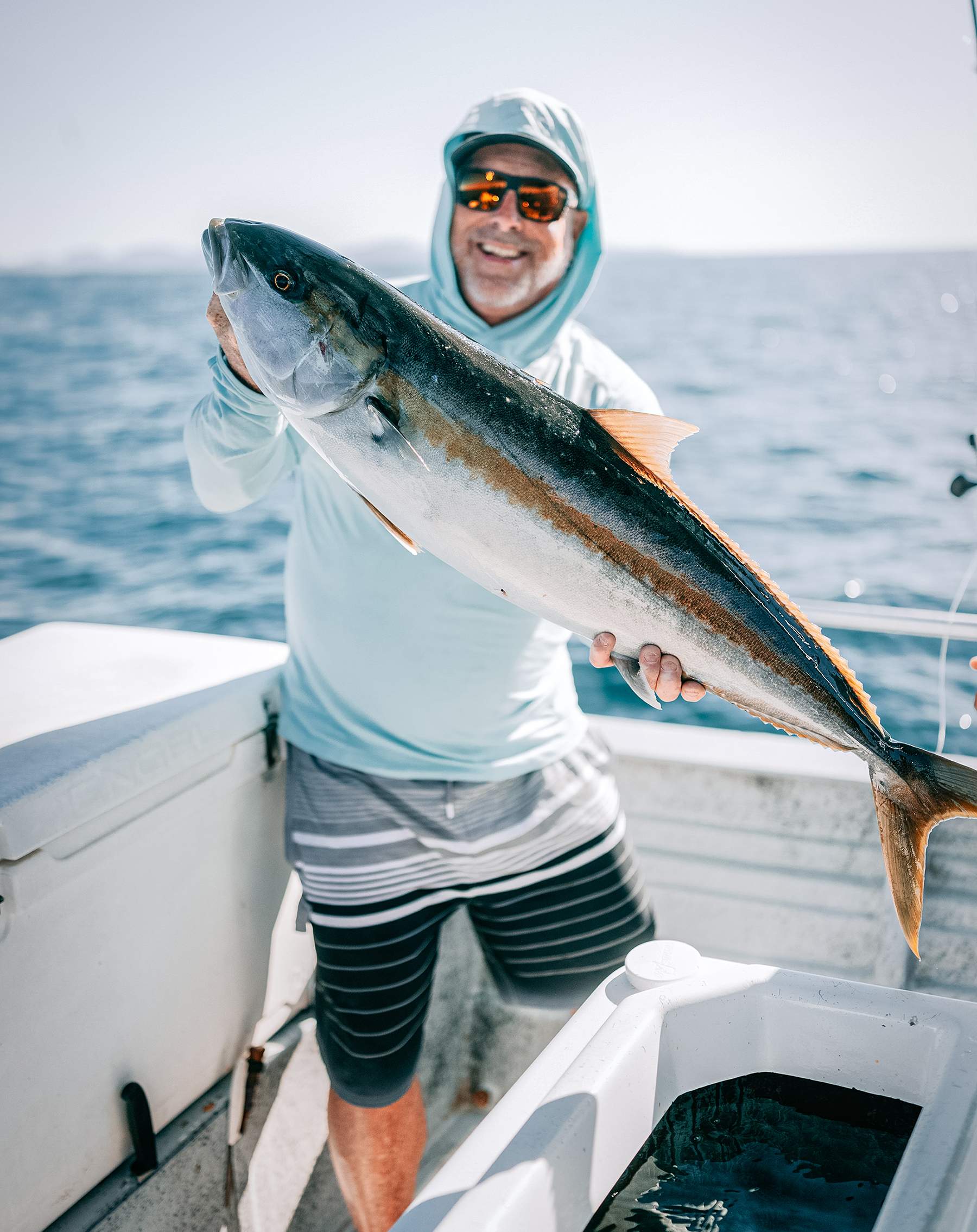
Final Thoughts: A Dwindling Frontier
Places like Bahía de los Ángeles are becoming harder to find. It’s the kind of place that doesn’t show up on travel blogs or all-inclusive ads. There’s no marina packed with yachts, no beach clubs, no concierge. Just dirt roads, hand-painted signs, honest people, and a stretch of coastline that still feels wild. For now.
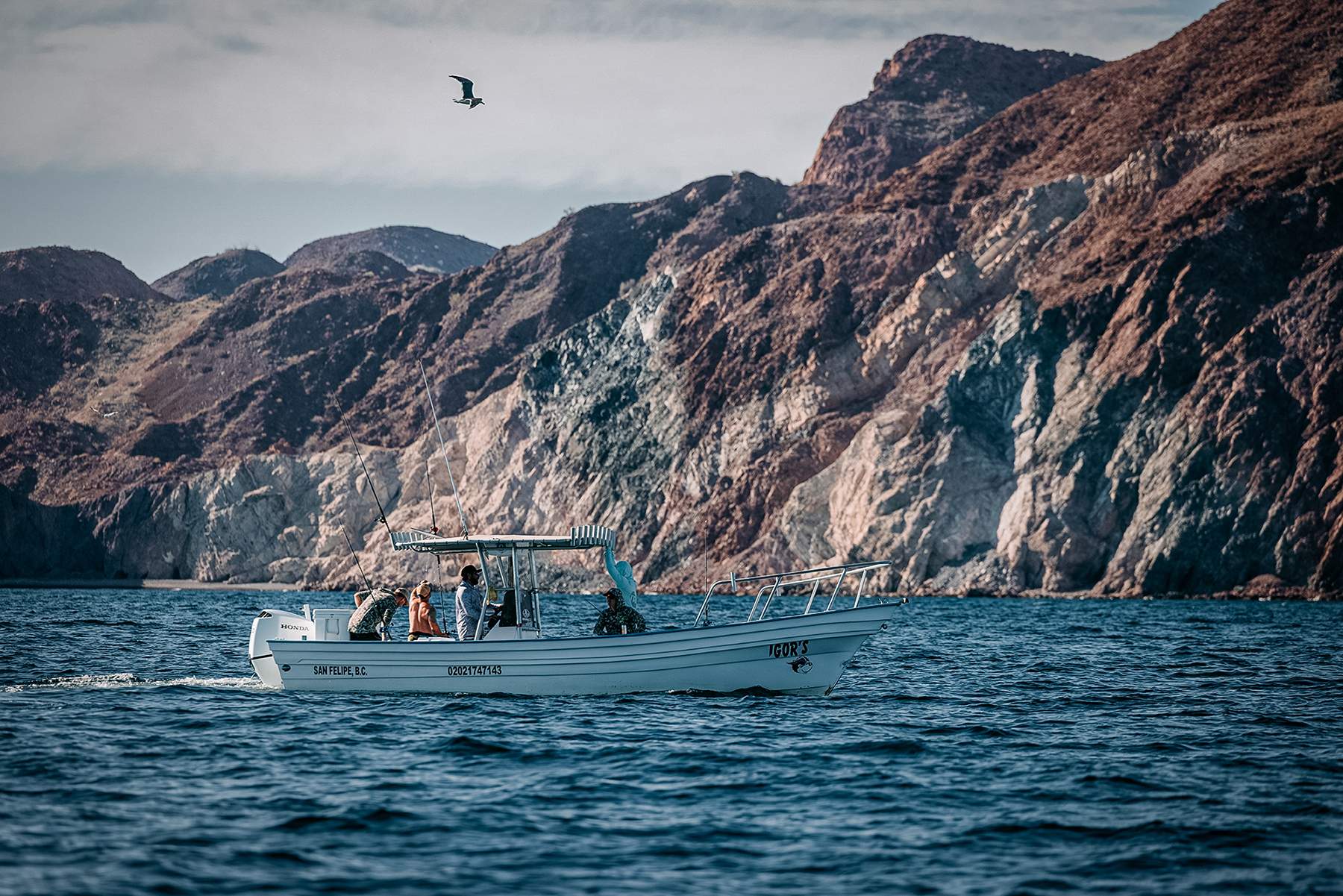
But it’s changing—slowly, then it will come all at once. Word gets out. A few more people show up. Somebody builds a hotel with a website and online booking, and the rest follows. It always does.
Even my writing about it probably plays a part in that. That’s the tradeoff. You want to protect it, but you also want to share it, because trips like this remind you what it feels like to really unplug, to earn something, and to be somewhere that hasn’t been polished for mass consumption.
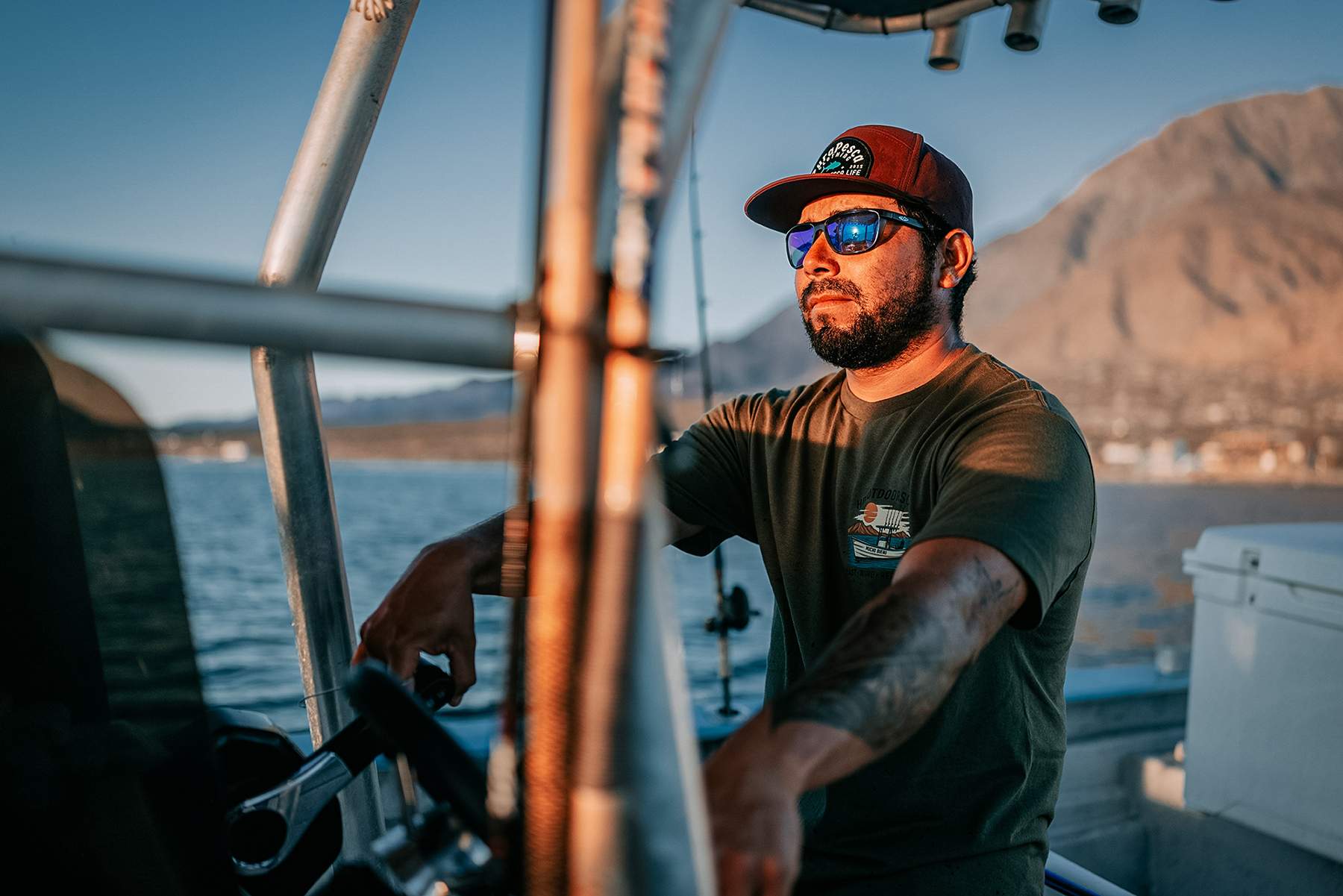
Bahía de los Ángeles forces you to slow down, strip things back, and pay attention. To the wind, the water, the people around you, and the fish below.
On our last night, after yellowtail sashimi and Tecate Light, one of the guys leaned back in his chair and asked, “Does it get any better than this?” Nobody answered.
It doesn’t.
